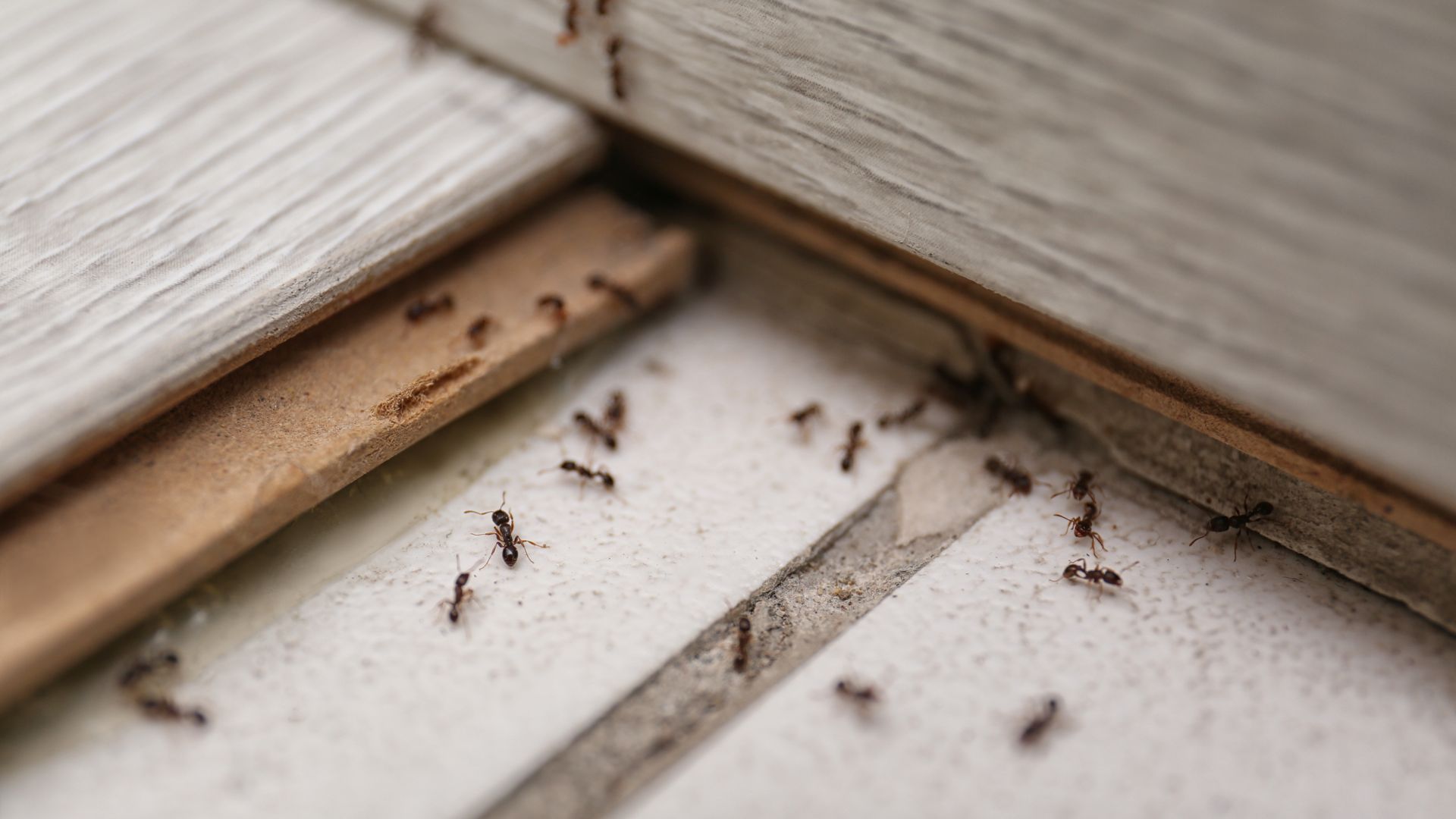
Rodent Exclusion In Western Massachusetts: What You Should Know
When rodents get into Western Massachusetts homes, many residents turn to rodent traps as a solution. Do traps work? Yes. But they aren't a solution by themselves. You can trap rodents all day, every day, and still have rodents in your home. Why? Because backyard rodents can keep becoming indoor rodents if you don't seal entry points. Join us today as we talk about rodent exclusion and how exclusions are a critical part of rodent pest control in Western Massachusetts. We'll also cover other essentials, such as baiting and trapping. When we're done, will you be an expert? No. But you'll better understand how experts effectively deal with rodent problems. If you don't want to tackle the hard work of rodent exclusion and control, jump over to our contact page to request assistance. We're happy to help. If you'd rather do it yourself, read on to learn about general control methods for common rodents in our area.
Rodent Exclusion Techniques
Let's begin by discussing what it means to exclude rodents. You can immediately guess that it has to do with keeping rodents out because you're excluding them, but what are the techniques used when performing exclusion work and where do you apply these techniques? Here are some examples.
- Expanding foam. One of the first products you'll use is a can of expanding foam. While rats and mice can chew through this material, they're not likely to try. Rodents typically get into homes through existing entry points or quickly make small holes larger. Filling in a gap or void with expanding foam is often enough deterrence. Use this product when you find a gap that leads behind a sill plate. Expanding foam is messy and best used for interior patches. The rule of thumb with expanding foam is to apply it even if you don't know for sure rodents can find a route into your home through the void you're sealing. It is better to have more protection than not enough protection.
- Silicone caulk. You can get a lot done with a caulking gun. You can seal gaps around window and door frames, pipes, wire conduits, and other exterior wall penetrations. Silicone caulk is also great for filling in gaps and holes temporarily. Silicone caulk comes in many colors, and you can find colors that match the building materials to which you're applying the product. This is the product to use if you want things to look nice.
- Copper mesh. When you find a large hole or gap, copper mesh is likely to work better than foam or caulk. When you apply copper mesh, keep in mind that a rat or mouse can grab the material with their teeth and pull it out or push on it and gain access. Apply copper wire so that it isn't easy to pull it out or push it in. Along with filling in holes and gaps, you can use copper mesh to keep mice out of your downspouts. When mice can work their way up through your downspouts, they can access vulnerabilities on your roof. Copper mesh keeps rodents out while still allowing rainwater to flow down and away from your exterior.
- Aluminum window screen material. Some patches are too large to seal with the methods listed so far. When you have a large hole, it is best to repair it or hire a contractor to repair it, but you can use aluminum window screen material for a temporary fix. Don't use regular screening material, such as plastic or fiberglass. Rodents can easily chew through them. If you want a more permanent patch, use quarter-inch galvanized screen material, which is often called hardware cloth. You can use hardware cloth for long-lasting protection in louvers, gable vents, and other unprotected openings.
- Metal flashing. When rodents chew on the wood of your home, you might notice gnaw marks or holes in wood. In some cases, it is necessary to apply a strong material to bolster your protection. We recommend metal flashing for this job.
- Pipe protectors. If your home has pipes or wire conduits that run up the sides, rodents can climb these and gain access to your roof. Pipe protectors look like cones. They're attached to the pipe or conduits upside down. When the rodents climb the pipe, they're unable to get past the pipe protector.
- Trim tree branches. Rodents can leap from tree branches to get onto your roof. Sometimes exclusion is as simple as trimming branches away from your roofline.
Do you see how exclusion work helps to keep rodents out? When you do the hard work of rodent excursion, it provides a long-lasting layer of protection.
Is exclusion work the first step in rodent control? Not exactly. We can't emphasize enough that rodent control is a process, and it is a process that does not have a clear set of steps. While you may begin with exclusion work, you'll apply exclusions every step of the way, not just at the beginning. If you seal every entry point in your home on day one, what do you think the rodents in your home will do? They'll likely chew holes to get out of your home. The exception to this is if the rodents in your home are isolated to one area, and you apply an effective trapping strategy to get rid of them. In most cases, this is impossible without training and experience. Professionals use field-tested methods and apply their experience when rodents are particularly difficult to control. If you're going to tackle exclusion work and rodent control on your own, we recommend leaving some pathways for the rodents to exit your home as you apply your exclusions over time.
How To Bait Rodents Out Of Your Walls
One of the ways a licensed professional will get the rodents out of a home is by deploying tamper-resistant bait stations around the exterior. Baiting rodents is often complicated. Professionals inspect and evaluate potential routes, signs of activity, conducive conditions, and other factors to help them select appropriate bait station placement. If you do your own rodent control, take time to learn how baiting rodents can fail. Doing so could prevent you from having undesirable results and wasting time, energy, and money. Our best suggestion is to put your bait stations in concealed locations, such as underneath your deck or in a crawl space.
Deterring Rodents From A Particular Area In Your Home
At the heart of a rodent control strategy is the control of food resources in the home. Rats and mice are constantly looking for food. Your goal is to make them look outside your home. Exclusion can help you accomplish this. Let's look at how you can do this in your pantry.
- Inspect your pantry for tiny holes. Look for holes that are the size of a quarter or smaller. Examine your baseboards and walls, particularly in locations that are obscured by items on the floor. If you find holes, patch them using the materials listed above.
- Store your pantry food in sealed containers. Doing this will seal the scent of the foods inside. When rodents can't smell the food, they don't know to chew a hole to get into the containers and eat the food.
- Clean your pantry. Removing food debris on your floors and shelves does two things. It removes potential food options for tiny rodents, and it removes the scent of food that makes big rodents want to explore your pantry.
When you protect your stored food and use exclusion methods to seal your pantry, you make the room undesirable to domestic rodents. A domestic rodent is more inclined to eat food that falls from your table rather than a food source found in nature.
Humane Rodent Infestation Treatments In Western Massachusetts
Are you in Western Massachusetts? If so, you are in our service area. You can reach out to American Pest Solutions for humane rodent control. What do we mean by humane? There are many ways to control rodents. Some are accidentally harmful to rats and mice. When traps are not set properly, rodents can chew their own appendages off to get away from the traps. Our pest control technicians work hard to deal with rodents with careful consideration of how to avoid unnecessary harm. We also emphasize natural management methods and extensive exclusion services. Natural management works to drive rodents out. Food control and sanitation are an example of this type of rodent control. And, when it comes to addressing rodent exclusion, our technicians are trained to provide comprehensive solutions. They expertly patch openings using the materials listed above. Along with exclusion work, we provide structural repair services if you want an even longer-lasting solution.
When it comes to controlling rodents in Western Massachusetts, the best solution is one that includes comprehensive rodent exclusion services. If you'd like to learn more or schedule a rodent inspection, drop us a line on our contact page or give us a call. We'll help you find the right solution for your needs and budget.

Why Choose American Pest Solutions?
We're Not Just Exterminators, We're Pest-Exterminating Experts!
-
We're ResponsibleAll of our employees undergo stringent background checks, including drug screening. Our field representatives are committed to providing exceptional service, while our office staff, praised by customers for their expertise, diligently assists with inquiries regarding services, products, scheduling, and payment options.
-
We've got the solutionsOur company President, Bob Russell, is a Board Certified Entomologist, and a member of the Entomological Society of America, distinguishing us from others in our field. Should you encounter an unidentified pest, simply photograph it, email us the picture with details of its discovery, and we'll promptly provide a confirmed identification and expert treatment recommendations.
-
We're licensed & certified.American Pest Solutions, recognized by the NPMA as a QualityPro certified company, boasts licensed and certified pest control professionals in Massachusetts and Connecticut. Engaged in both regional and national pest management associations, our employees undergo annual recertification training and seminars, supplemented by regular classes conducted by our resident Entomologist at our facility.

Hear From Our Happy Customers
At American Pest Solutions, your satisfaction is our priority! See for yourself what our customers have to say about working with us.
-
"Awesome people!"I've been using American Pest Solutions for many years. Exceptional customer service Great staff and always accommodate my needs. Awesome people!!!Mohamad B.
-
"Great company to business with"Yes, we are very happy using American Pest Solutions! Great company to business with. Highly recommend them!Melissa B.
-
"We highly recommend both American Pest Solutions and Dean"Dean does a great job taking care of our needs He is the best at what he does! We highly recommend both American Pest Solutions and Dean for your pest control needs!Bryan D.
-
"Our service tech, John was awesome!"Our service tech John was awesome!!! He took the time to show us where the problems were stemming from & assured us that our problems will be resolved!Paula M.
-
"Cordial, professional, and very patient in explaining their methods!"I just had an overrun of mouse population in almost every room of my house! After the first visit, that dropped almost completely!Diane S.
-
"Very friendly and professional."They were thorough in addressing the cracks and entry points where any mice might come in. They were knowledgeable and took pride in their profession. Thank you.Donna L.
-
"They never disappoint"I'm a long standing customer and they never disappoint. They come asap when needed and I know the techs so well they feel like family.Charlotte S.
-
"Always on time and took great care of my home."Dean is the best. He always makes sure to ask if I would like the interior traps checked and indulges me with great information when I ask many questions. I am very thankful to have him as my technician.Michelle S.